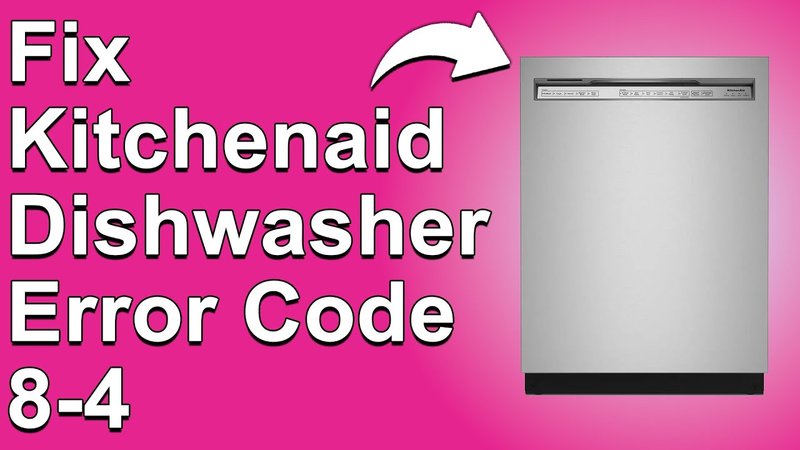
Let’s break it down. The E1 error code on a KitchenAid dishwasher usually signals a water-related issue. It could mean the machine isn’t filling properly, or it’s not draining as it should. In simpler terms, imagine trying to wash dishes by hand without enough water or without draining the dirty water away. It wouldn’t work well, would it? Similarly, your dishwasher’s performance is compromised if it can’t manage water properly. Rather than ignoring it, addressing the issue could save you from bigger problems (and a larger repair bill) down the line.
Understanding Error Code E1
Error Code E1 is typically tied to the dishwasher’s water inlet or drainage system. Think of the water inlet like a faucet. If it’s blocked or malfunctioning, water won’t flow into the dishwasher. Whether the source is a kinked hose, a closed valve, or a faulty sensor, finding and fixing this issue ensures your dishwasher gets enough water to work its magic.
On the flip side, the problem could be with the drainage system, something like a clogged sink in your kitchen. When the dishwasher can’t empty itself properly, it might trigger the E1 code. Grimy water left behind affects cleaning efficiency and might leave residue on your dishes. Thus, it’s crucial to ascertain which part of the system is crying out for help.
Here’s the deal: The E1 error prompts you to inspect these water systems. Though it might seem intimidating, don’t worry; you won’t need a handyman for everything. Check simple fixes like ensuring the water supply is on, inspecting hoses for kinks, and making sure drainage paths are clear.
Common Causes of Error E1
You might be wondering, what exactly causes these water-related hiccups? One common culprit is a blocked or clogged filter. Over time, small food particles can build up and restrict water flow. Think of it as a shower drain getting slower over time due to hair and soap gunk. Regular cleaning can keep things flowing smoothly.
Another frequent issue is a worn-out inlet valve. Like a leaky tap, it either under-fills or constantly drips, affecting the water level in your machine. Checking for leaks or irregular water levels after starting a wash cycle can help determine if this piece is at fault.
Lastly, don’t overlook electrical issues. A faulty control board or sensor might mistakenly trigger the error code. It’s less about water mechanics and more about the brain of your dishwasher misfiring. If you’re unsure, consulting the manual or contacting professional help ensures you don’t make the situation worse.
Consequences of Ignoring the E1 Error
Ignoring an E1 error is tempting, especially when your dishwasher still runs. But here’s why you shouldn’t: left unchecked, minor issues can escalate. A blocked inlet might lead to more significant mechanical failures, or persistent drainage problems could cause water damage to your kitchen floor.
Moreover, performance declines over time. If water isn’t reaching the necessary areas, you’re essentially running a machine on half power. Dishes come out less clean, and you might find yourself re-washing items, wasting both time and water.
Ultimately, ignoring this error can cut your appliance’s lifespan short. Like a car running on low oil, components wear out faster, and the risk of complete failure increases. So, while your dishwasher might function now, it’s more cost-effective and sustainable to tackle the problem head-on.
Take Action: A Troubleshooting Journey
Now that we’ve covered the why, let’s talk about the how. Start by inspecting the water supply lines. Are they connected properly? Is there an issue with the valve? Addressing these simple questions can often lead to easy fixes. Next, clean the filter and the areas around the water inlet and outlet. Keeping these parts free of debris ensures smooth operation.
If these steps don’t solve the issue, consider consulting the appliance manual or reaching out to customer support. They can guide you through more specific troubleshooting steps and help pinpoint the problem without unnecessary guesswork.
Finally, consider regular maintenance as a preventative measure. Just like you might change car oil, keeping your dishwasher in top shape involves routine checks and cleanliness. That way, you’ll avoid surprises and keep everything running smoothly.
In conclusion, while it might be convenient to ignore that pesky E1 code, understanding and addressing it promptly saves you hassle and headache in the future. And hey, think of how satisfying it will be to load your dishwasher, hit start, and enjoy the joy of sparkling dishes once again!